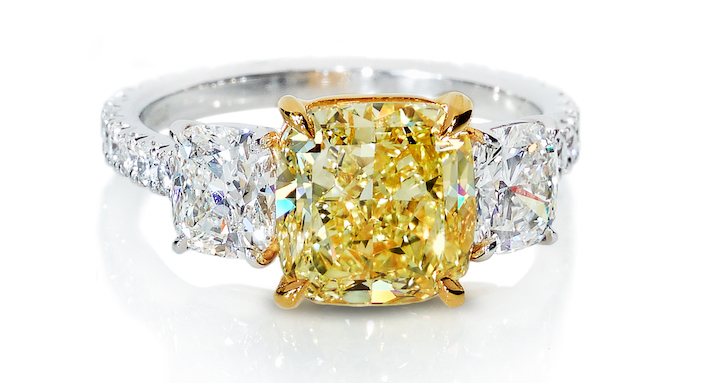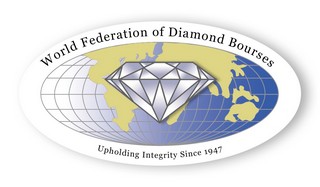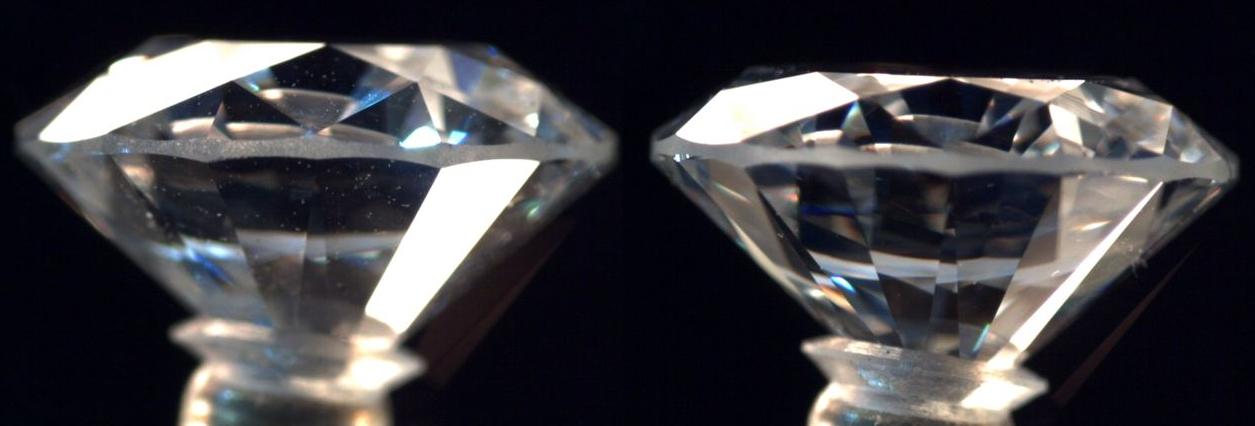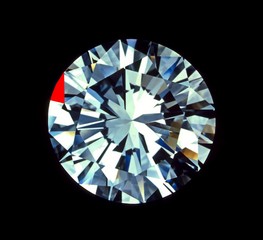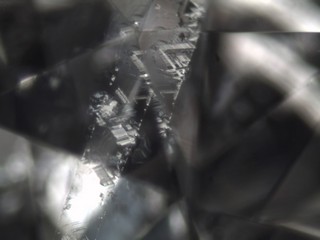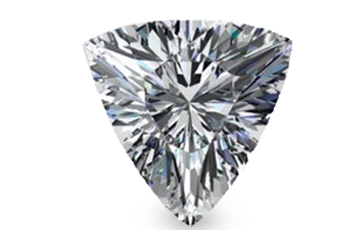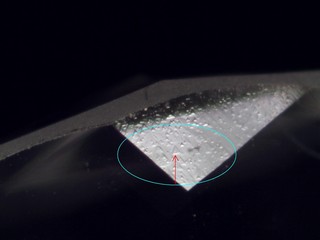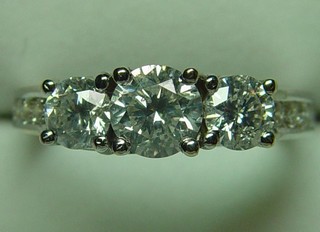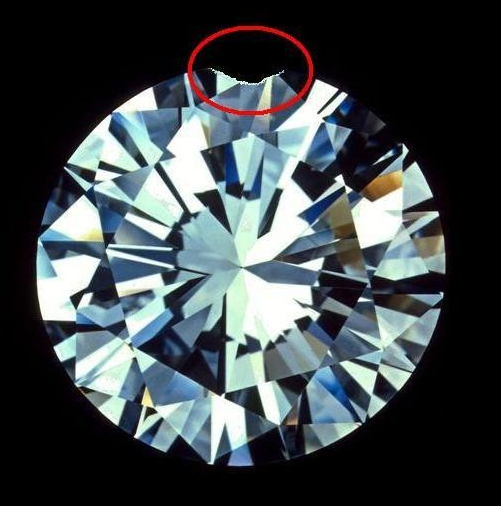A yellow diamond is a coloured diamond characterised by its natural yellow body colour. Yellow must be the predominant colour in the diamond, though it can be modified by other hues, such as green, orange, or brown, which can influence the overall appearance of the stone.
Key Characteristics of Yellow Diamonds
Colour Origin:
The yellow colour in diamonds is primarily caused by the presence of nitrogen atoms within the diamond’s crystal structure. These nitrogen atoms absorb blue light, which results in a yellowish hue. The more nitrogen present, the more intense the yellow colour can become.
This unique characteristic makes yellow diamonds distinct from other coloured diamonds, such as blue diamonds, which gain their colour from the presence of boron.
Colour Variations:
While yellow diamonds are often uniformly yellow, the shade and intensity of the yellow can vary widely. Some may show a subtle, faint yellow, while others exhibit a vibrant, rich yellow that is striking and eye-catching.
The yellow can sometimes be modified by secondary hues. For instance, greenish-yellow diamonds might show a yellow-green tinge, while brownish-yellow diamonds can appear more earthy or muted. These variations in colour can affect the diamond’s overall value and appeal.
Canary Diamonds:
The term “canary diamond” refers to a particularly vivid, intense yellow diamond. These diamonds are much rarer than the more common yellow diamonds, and their colour can range from brilliant lemon yellow to golden hues.
Canary diamonds are highly prized in the market for their bright, vibrant appearance and often fetch higher prices due to their rarity and striking colour.
Rarity and Availability:
Natural yellow diamonds are relatively common compared to some other coloured diamonds, like pink or blue diamonds. However, the intensity and depth of the yellow colour can influence the rarity and desirability of a diamond.
Yellow diamonds are found in several regions around the world, including Africa, Australia, and South America.
Grading Yellow Diamonds:
Like all diamonds, yellow diamonds are graded on a combination of colour, clarity, cut, and carat weight. However, when grading coloured diamonds, the hue, tone, and saturation are the primary focus.
Hue refers to the primary colour of the diamond (in this case, yellow), tone refers to the lightness or darkness of the colour, and saturation measures the intensity of the colour. A high saturation, deep yellow diamond will generally be more valuable than a pale or less saturated one.
The most sought-after yellow diamonds have a vivid yellow hue with high saturation and a pleasing, even colour distribution throughout the stone.
Symbolism and Use:
Yellow diamonds are often associated with happiness, wealth, and success due to their vibrant, sunny appearance. They can also symbolise optimism and joy, making them a popular choice for engagement rings, jewellery, and special gifts.
Due to their striking appearance, yellow diamonds are often used in high-end jewellery, where their bold colour can stand out and create a dramatic effect.
Price and Market Appeal:
The price of yellow diamonds can vary significantly depending on factors like colour intensity, clarity, and size. Vivid yellow diamonds, particularly those with a deep, rich hue, tend to fetch higher prices due to their rarity and the high demand in the luxury market.
However, the relative abundance of yellow diamonds compared to other coloured diamonds like pink or blue means they are often more affordable than rarer varieties.
Yellow diamonds are a beautiful and unique variety of coloured diamonds, with their colour arising from the presence of nitrogen in their crystal structure. While yellow diamonds are relatively common, those with intense yellow hues, such as canary diamonds, are rarer and more valuable. These diamonds are graded based on their hue, tone, and saturation, and are prized for their vivid and radiant appearance. They are a popular choice in fine jewellery, symbolising happiness, wealth, and success, while also offering an affordable yet striking alternative to more expensive coloured diamonds.
